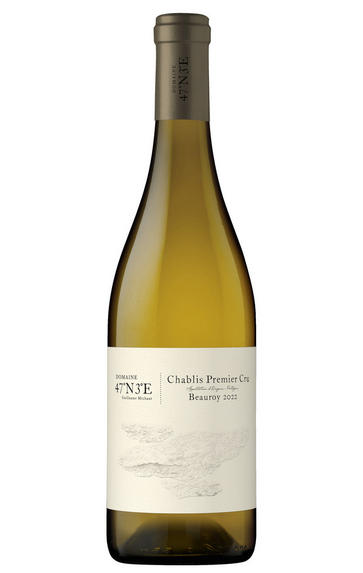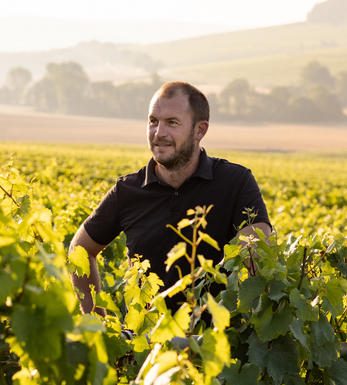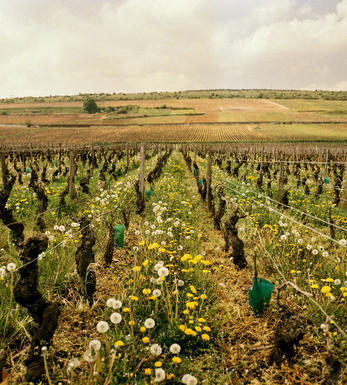
2022 Chablis, Beauroy, 1er Cru, Domaine 47°N 3°E, Guillaume Michaut, Burgundy

About this WINE

Domaine 47°N 3°E
Guillaume Michaut is a producer from Chablis, France. His grandfather was an early believer in the wines of Chablis and worked proudly to expand the Chablis appellation to his village of Beines and beyond. By the 1960s, he could pass a rather large holding of vineyards down to his sons.
Guillaume worked alongside his father and uncles in the vineyards as a teenager and joined the family domaine in 2004. However, after his father passed away, Guillaume realised that his vision was starkly different from that of his uncles and decided to set out on his own with his small share of family vines back in 2018. These vineyards represent just over one hectare altogether: 0.4 hectares of Chablis in Vau Brou, which he helped plant in 2000, and a 0.6-hectare block in the Premier Cru of Beauroy, which stretches from Beines nearly to the town of Chablis.
Michaut’s parcel was planted in 1980 and is located more precisely in the lieu-dit Côte de Savant, found just outside of Beines and across from the retention lake that his grandfather helped create in the 1960s. Recently, Guillaume added a little over two hectares of Petit Chablis that he planted in 2020. After working a year-long internship with Nicolas Maillet in the Mâconnais, Guillaume developed an interest in organic farming and low-intervention winemaking. Equally as important, he adopted a winemaking philosophy that respects the terroir and the vineyard over the process and the winemaker.
Setting out on his own was an opportunity to implement this belief. This began with promoting the place (rather than himself) by naming his domaine 47 N 3 E, which refers to the longitude and latitude of his hometown of Beines. In the cellar, all wines are vinified with native yeasts and aged without sulfur, though a small amount is always added at bottling. The Chablis is vinified and aged entirely in stainless steel tanks.
He produces two Premier Cru wines from Beauroy and Côte de Savant. Fruit for these cuvées comes from the same vineyard, which can be labelled as Beauroy or Côte de Savant. Beauroy is aged in stainless steel, while the Côte de Savant is fermented and aged in 500L oak demi-muids.

Chablis Premier Cru
Chablis Premiers Crus are stylish, minerally wines which, typically, are less intense than the Grand Crus but finer and longer-lasting than basic Chablis. They are highly underrated with the better examples outclassing many a good village white Burgundy.
The vineyards cover 750 hectares, scattered across 15 communes on isolated slopes with good exposure. There are 17 principal Premiers Crus but in total 79 vineyards are eligible, with most of the lesser-known ones using a more familiar umbrella name on their label. The best flank the Grands Crus on the north bank of the River Serein, like Montée de Tonnerre (probably the best of all), Fourchaume and Mont de Milieu.
Those just south of Chablis, like Vaillons, Montmains (especially Les Forêts) and Côte de Léchet are also good. With the vineyard area having doubled since the 1970s, quality varies enormously so, as ever, the producer is key.
Styles also vary, with some maturing and fermenting in stainless steel for a purer, more minerally style, while others age and sometimes even ferment their wines in oak for extra complexity. The best examples reach their apogee at eight to 10 years, but are normally enjoyed long before then.
Recommended producers: Jean-Claude Bessin, Billaud-Simon, Séguinot-Bordet, J.-P. & Benoit Droin, Duplessis, Defaix

Chardonnay
Chardonnay is often seen as the king of white wine grapes and one of the most widely planted in the world It is suited to a wide variety of soils, though it excels in soils with a high limestone content as found in Champagne, Chablis, and the Côte D`Or.
Burgundy is Chardonnay's spiritual home and the best White Burgundies are dry, rich, honeyed wines with marvellous poise, elegance and balance. They are unquestionably the finest dry white wines in the world. Chardonnay plays a crucial role in the Champagne blend, providing structure and finesse, and is the sole grape in Blanc de Blancs.
It is quantitatively important in California and Australia, is widely planted in Chile and South Africa, and is the second most widely planted grape in New Zealand. In warm climates Chardonnay has a tendency to develop very high sugar levels during the final stages of ripening and this can occur at the expense of acidity. Late picking is a common problem and can result in blowsy and flabby wines that lack structure and definition.
Recently in the New World, we have seen a move towards more elegant, better- balanced and less oak-driven Chardonnays, and this is to be welcomed.


Buying options
Add to wishlist
Description
This vineyard was planted in 1980 by Guillaume’s grandfather. Made in stainless-steel tank, this is a floral wine with some herbal notes and a hint of orange. Spicy ripe citrus also appears on the palate, along with a zesty, chalky freshness that kicks on to give a long, oyster shell and iodine-inflected finish.
Drink 2025 - 2032
Berry Bros. & Rudd
wine at a glance
Delivery and quality guarantee